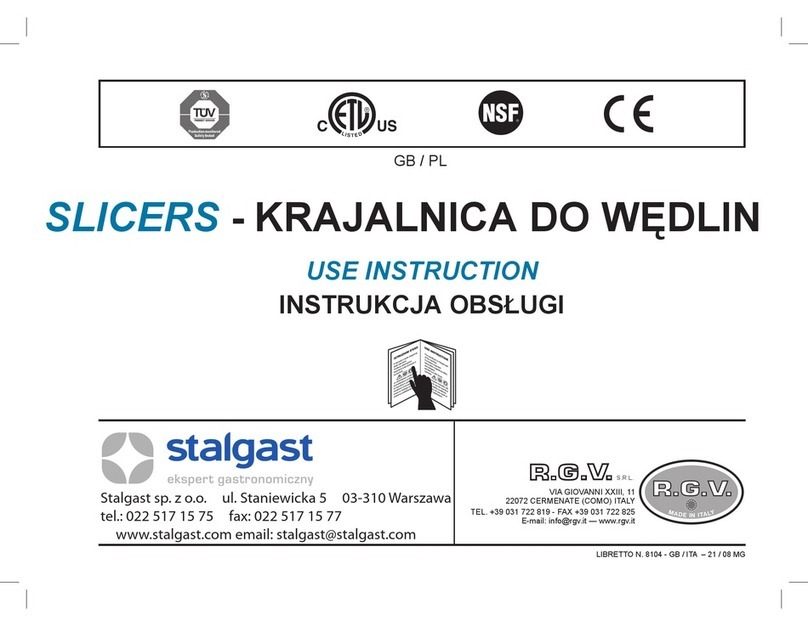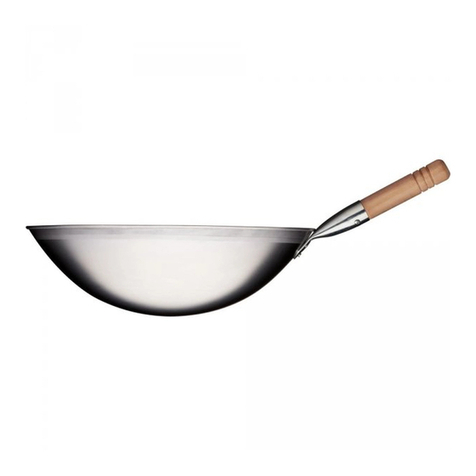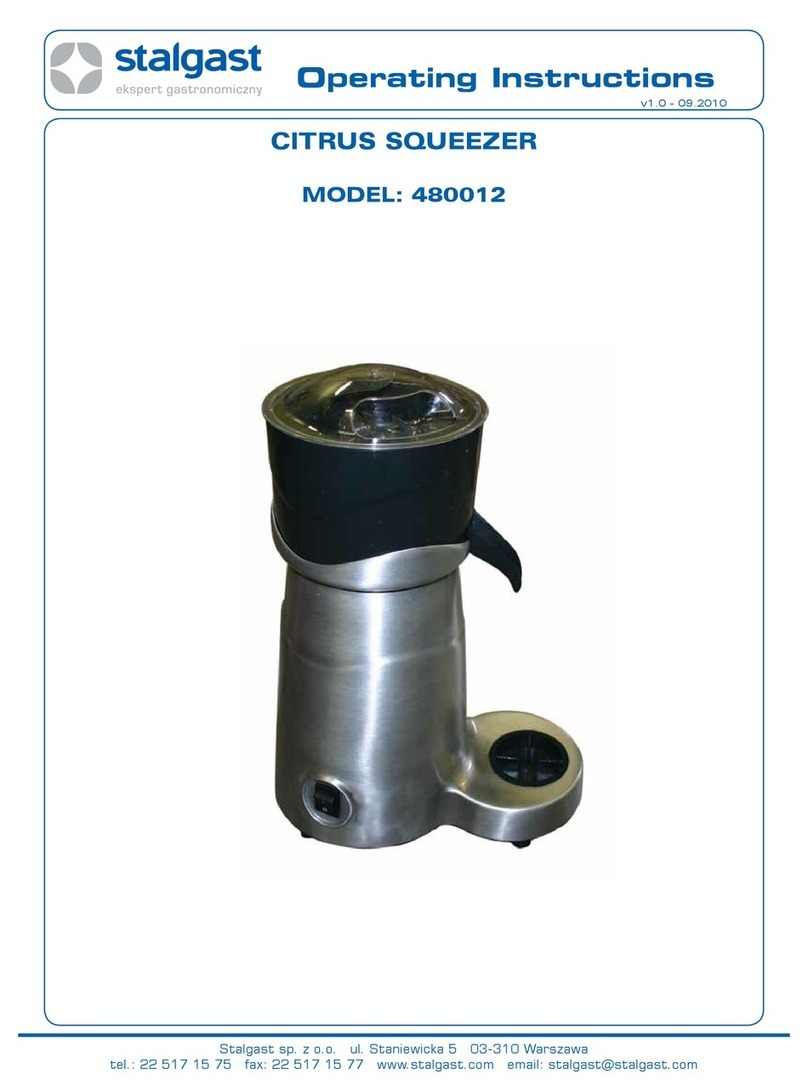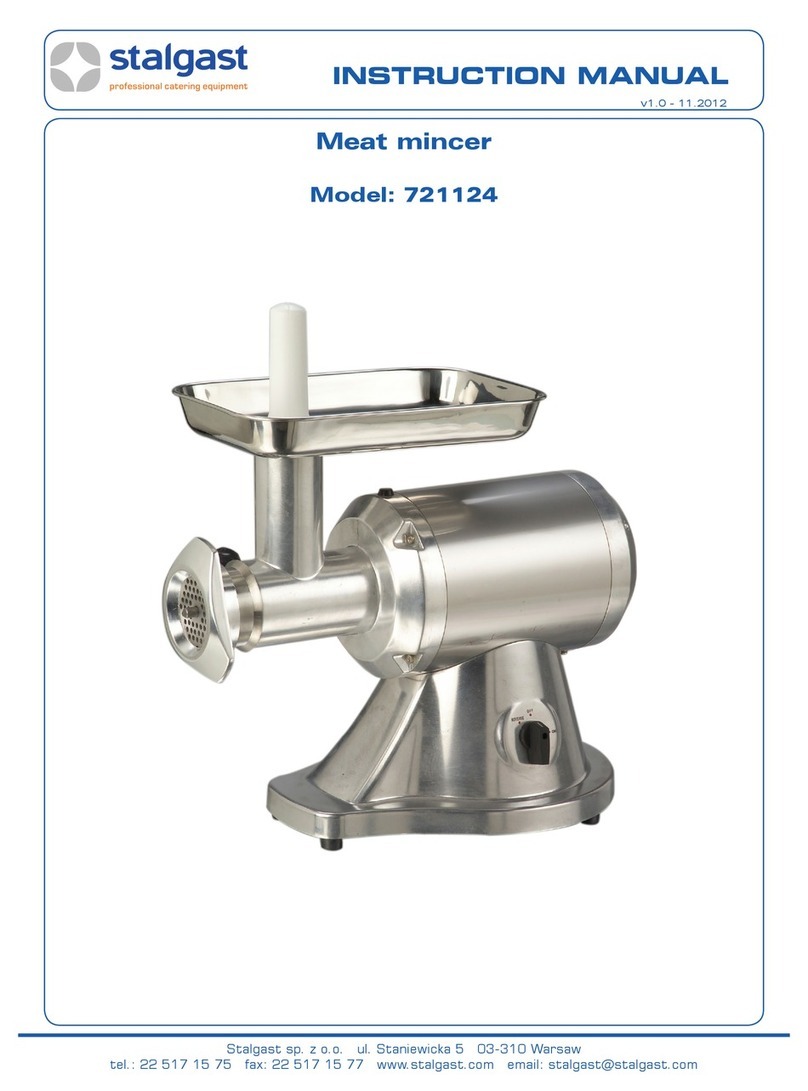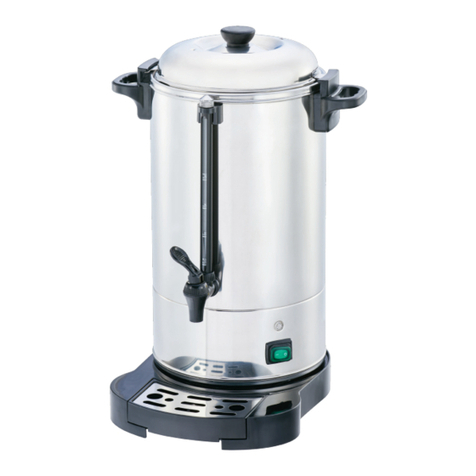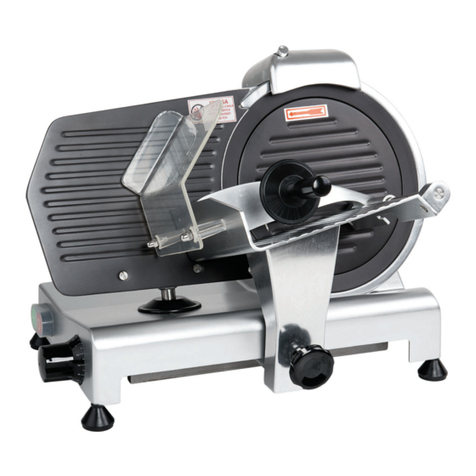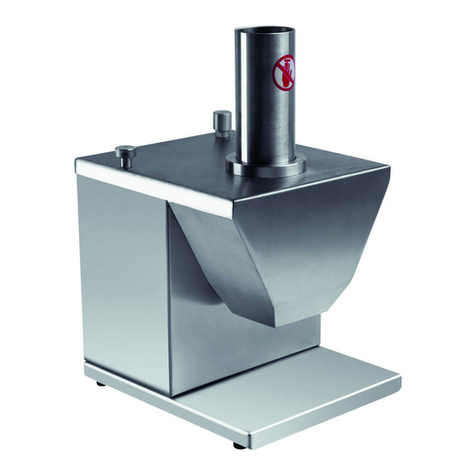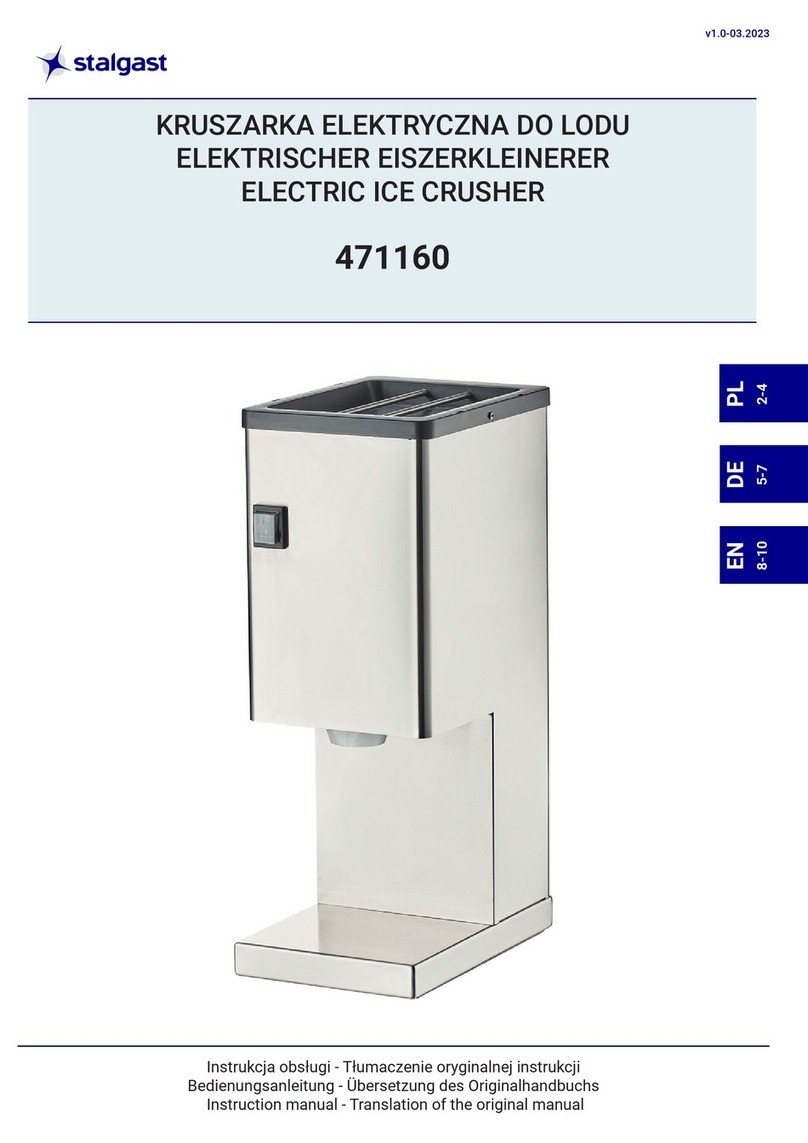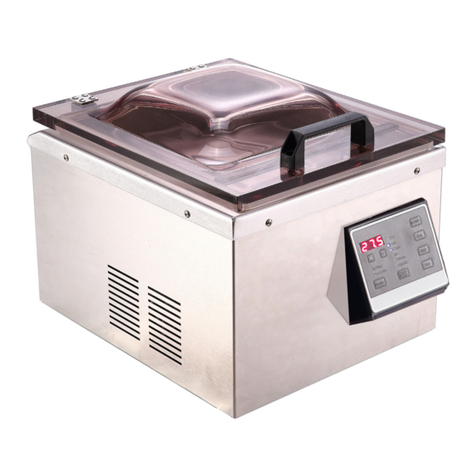
- 2 -
PL
Dziękujemy Państwu za zakup naszego produktu. Przed pierwszym użyciem prosimy dokładnie zapoznać się z niniejszą instruk-
cją obsługi. Aby zapewnić Państwu najlepsze rozwiązania techniczne urządzeń, stale rozwijamy je technologicznie.
Z tego względu zdjęcia i rysunki w poniższej instrukcji mogą różnić się od zakupionego urządzenia.
Instrukcja obsługi każdego urządzenia zawierająca aktualne zdjęcia i rysunki, dostępna jest na stronie internetowej
www.stalgast.com w zakładce „pliki do pobrania” przy opisie produktu.
UWAGA: Instrukcję należy przechowywać w bezpiecznym oraz dostępnym dla personelu miejscu.
Producent zastrzega sobie prawo do zmiany parametrów technicznych urządzeń. Kopiowanie instrukcji bez zgody producenta
jest zabronione
1. INSTRUKCJE BEZPIECZEŃSTWA
•Nieprawidłowa obsługa i niewłaściwe użytkowanie może spowodować poważne uszkodzenie urządzenia lub zranienie osób.
•Urządzenie może być stosowane wyłącznie w celu, do którego zostało zaprojektowane.
•Producent nie ponosi żadnej odpowiedzialności za szkody spowodowane nieprawidłową obsługą i niewłaściwym użytkowa-
niem urządzenia.
•W czasie użytkowania zabezpiecz urządzenie i wtyczkę kabla zasilającego przed kontaktem z wodą lub innymi płynami. W
przypadku, gdyby przez nieuwagę urządzenie wpadło do wody, należy natychmiast wyciągnąć wtyczkę z kontaktu, a następ-
nie zlecić kontrolę urządzenia specjaliście.
Nieprzestrzeganie tej instrukcji może spowodować zagrożenie życia.
•Nigdy nie otwieraj samodzielnie obudowy urządzenia.
•Nie wtykaj żadnych przedmiotów w obudowę urządzenia.
•Nie dotykaj wtyczki kabla zasilającego wilgotnymi rękami.
•Regularnie kontroluj stan wtyczki i kabla. W przypadku wykrycia uszkodzenia wtyczki lub kabla, zleć naprawę w wyspecjali-
zowanym punkcie naprawczym.
•W przypadku, gdy urządzenie spadnie lub ulegnie uszkodzeniu w inny sposób, przed dalszym użytkowaniem zawsze zleć
przeprowadzenie kontroli i ewentualną naprawę w wyspecjalizowanym punkcie naprawczym.
•Nigdy nie naprawiaj urządzenia samodzielnie - może to spowodować zagrożenie życia.
•Chroń kabel zasilający przed kontaktem z ostrymi lub gorącymi przedmiotami i chroń go z dala od otwartego ognia. Jeżeli
chcesz odłączyć urządzenie z kontaktu, zawsze chwytaj za wtyczkę, nigdy nie ciągnij za kabel.
•Zabezpiecz kabel (lub przedłużacz), aby nikt przez omyłkę nie wyciągnął go z kontaktu lub się o niego nie potknął.
•Kontroluj funkcjonowanie urządzenia w czasie użytkowania.
•Nie należy zezwalać na użytkowanie urządzenia przez osoby niepełnoletnie, osoby upośledzone zycznie lub umysłowo oraz
upośledzone pod względem zdolności ruchowej, a także osoby nieposiadające odpowiedniego doświadczenia i wiedzy do-
tyczącej właściwego użytkowania urządzenia. Wyżej wymienione osoby mogą obsługiwać urządzenie jedynie pod nadzorem
osoby odpowiedzialnej za bezpieczeństwo.
•Jeżeli urządzenie nie jest w danej chwili użytkowane lub jest właśnie czyszczone, zawsze odłącz je od źródła zasilania, wycią-
gając wtyczkę z kontaktu.
•Uwaga : Jeżeli wtyczka kabla zasilającego jest podłączona do kontaktu, urządzenie cały czas pozostaje pod napięciem.
•Wyłącz urządzenie, zanim wyciągniesz wtyczkę z kontaktu.
•Nigdy nie ciągnij urządzenia za kabel zasilający.
2. WARUNKI BEZPIECZEŃSTWA
•Nigdy nie ustawiaj urządzenia w pobliżu źródeł ciepła (np. kuchenki lub pieca).
•Urządzenie nie jest przeznaczone do użytku na zewnątrz.
3. BUDOWA
3.1. Przeznaczenie urządzenia
Urządzenie zostało wyprodukowane w celu podgrzewania i podtrzymywania temperatury zup, sosów, itp.
3.2. Opis urządzenia
1. Pokrywa: Urządzenie posiada pokrywę z klapką. Do serwowania należy podnosić tylko klapkę. Aby zdjąć pokrywę cał-
kowicie należy podnieść ją za pomocą jej pierścienia.
2. Pierścień nośny i pojemnik na zupę: Pierścień nośny jest zaprojektowany do przenoszenia w wygodny sposób zupy
w pojemniku na zupę. Należy używać pierścienia nośnego do wkładania i wyjmowania pojemnika z podgrzewacza.
3. Regulator temperatury: Podgrzewacz jest zaprojektowany, aby utrzymywać temperaturę potrawy. Kiedy jest nasta-
wiony na maksimum temperatura utrzymuje się na poziomie 80ºC ± 10ºC.
4. Płaszcz wodny: Dla szybszego działania można nalać gorącej wody. Jeżeli napełniony jest zimną wodą należy podgrzewać
wodę przez ok. 20 min. przed nalaniem do pojemnika gorącej zupy. Wodę należy nalać do poziomu oznaczonego wewnątrz
korpusu.


